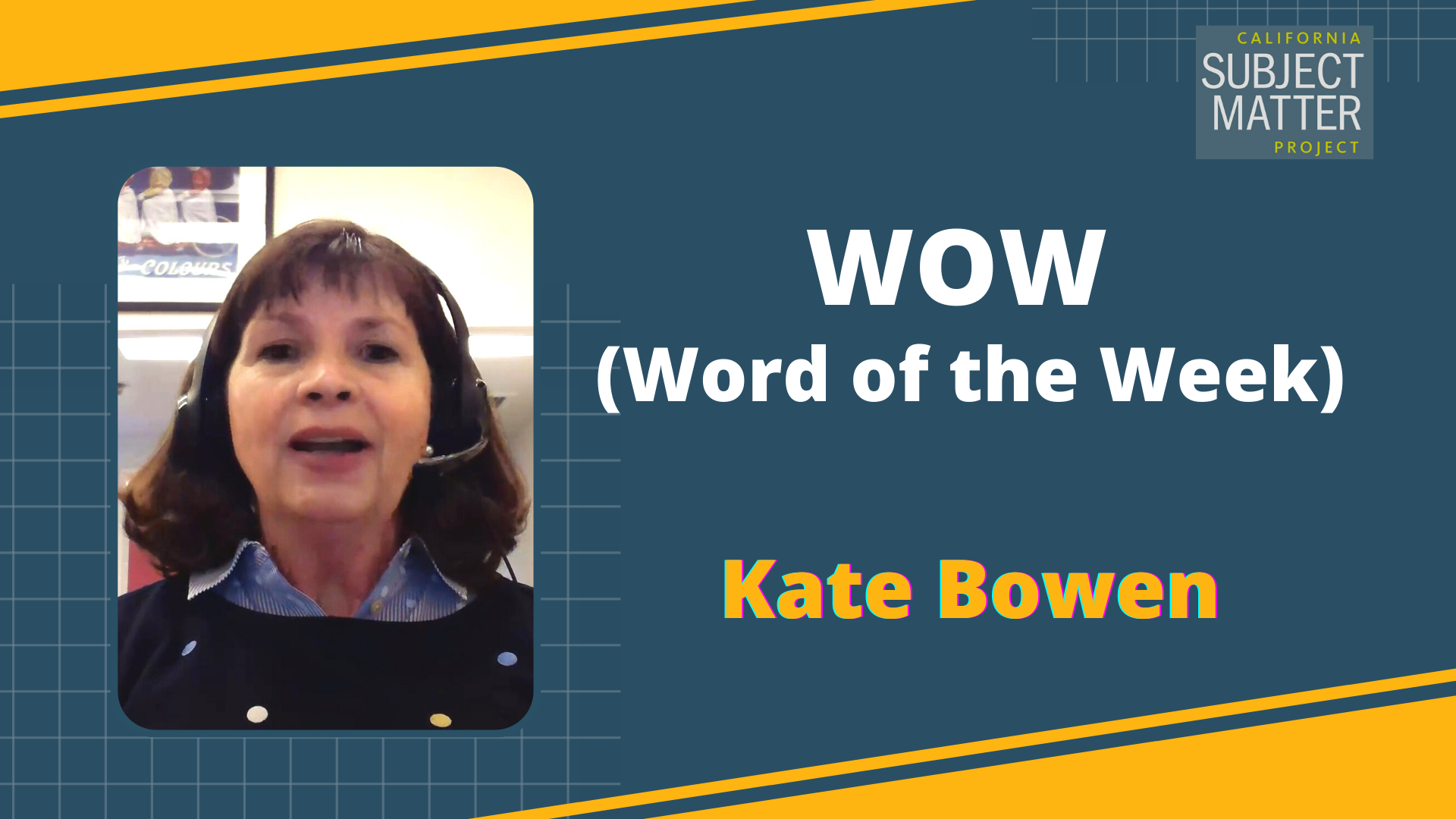Watch the Video
Presenter
Terry Piper, Hayward Unified School District Teacher, She has taught physical education to elementary and high school age students in Western Placer Unified School District in Lincoln, California.
Transcript
Hello, I’m Terry Piper and I’m looking forward to sharing some important ideas that will help you have a successful experience serving as a guest teacher in the physical education class, and will be important at all grade levels. I’m currently the site director of the Bay Area Physical Education and Health Project and I work with the Hayward Unified School District. In this introductory video, we look at three big ideas to support your work in physical education, and then provide more detail and examples in videos to three and four and which are grade level specific.
The three big ideas are:
1- Physical education is a place of learning, just like every other class at school.
2- Many of the same skills, methods and strategies you use in classroom also apply to physical education. So you’re ready.
3- Because learning movement skills is very individual and strongly influenced by self-concept and motivation, you can be most effective when you encourage improvement and effort towards the development of the skills.
You want to review the lesson plan for the day, locate any equipment you might need and spend a minute thinking about planning for how you will distribute the equipment to students, as well as collect it. It’s not likely that you will be asked to present new learning to students, so just relax.
You’ll want to visit the space where the lesson’s going to take place — the playground or the field, maybe the track — and take note of anything in that space that might be helpful for you with class management. Remind students that they know what to do and that you are counting on them to do their best. Let them know you are looking forward to a great day together. They will help you along the way.
Use some of the strategies in this video series to review prior learning and focus on students’ attention. Remind students of the many values of being active learners in physical education: things like improving skills and learning, or energy that lasts throughout the day.
The next thing we wanna talk about which is really important is students safety and health. You want to always review class or school emergency procedures and know who to contact if there is an injury. A student who sustains contact to the head should always visit the school health office. Check the lesson plans and teacher notes for any special accommodations for specific students’ health conditions.
When a student is excused from class activities, it typically is from the movement aspect. It is appropriate to ask excused students to engage in the learning from a cognitive perspective. Maybe ask a student to observe a classmate or a group of classmates and provide focused feedback. It’s a good idea to share some things for them to think about and look for when you ask them to do that.
So let’s review the three big ideas. One was: physical education is a place of learning, just like every other class at school. Two: many of the same skills, methods, and strategies you use in a classrooms can apply to physical education. Number three: learning movement skills is very individual and strongly influenced by self-concept and motivation. You can be most effective when you encourage improvement and effort towards that movement.
Really, just enjoy. Physical education can be the highlight of your guest teacher experience. It’s a great opportunity to work with students in a different environment, with the same goals: learning. You can encourage support and cheer on students of all ages and enjoy the conversations and interactions with students about their work and their learning.
Next videos 2, 3 and 4 are available to provide more detailed grade level focused learning for you. Be sure to watch those when you know what grade level you’ll be working with. Thanks.
Accompanying Materials & Resources
- Quick Guide: Teaching Physical Education (PDF – 1 Page)
- High School P.E. with Terry Piper – HS Activities – Substitute Lesson (PDF)
- High School P.E. with Terry Piper – Sample SMART Goals Worksheet & Practice Sheet (PDF)
- High School P.E. with Terry Piper – SMART Goals Practice Sheet (PDF)



